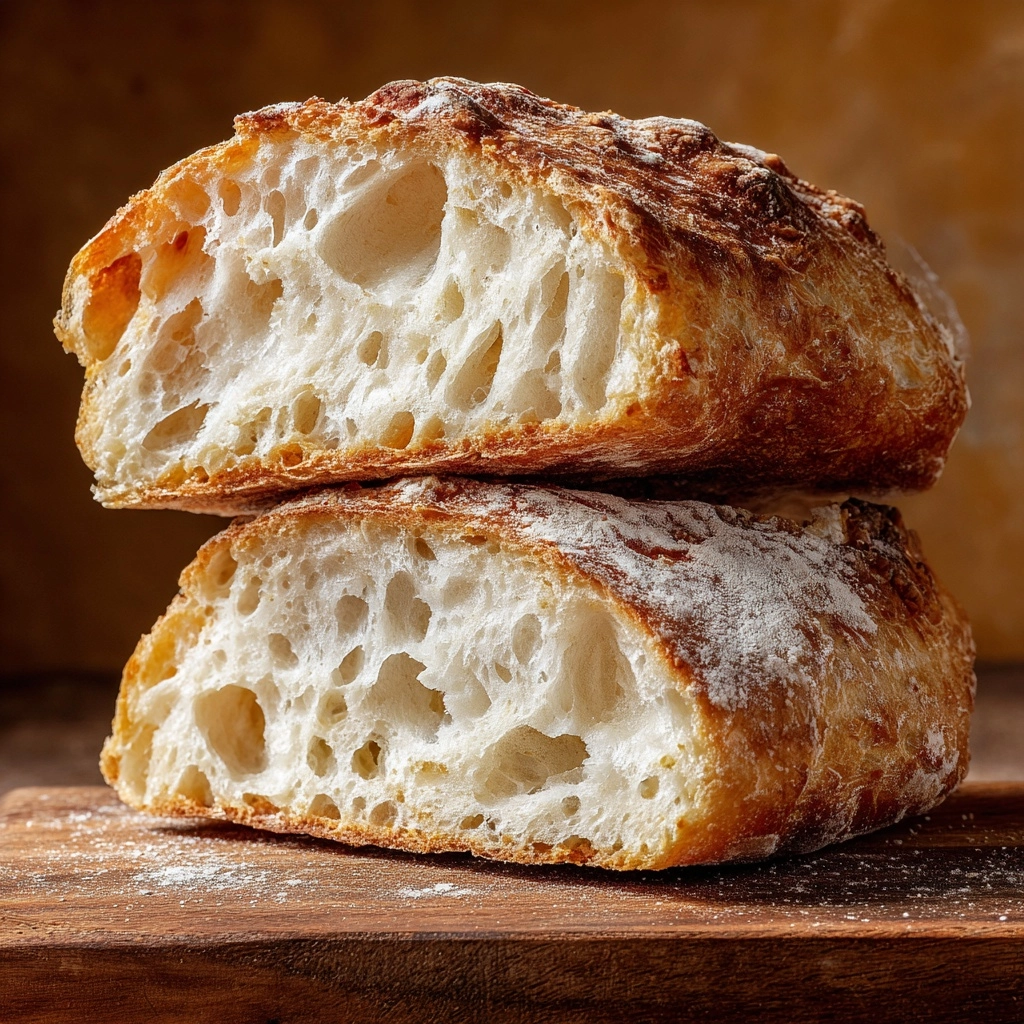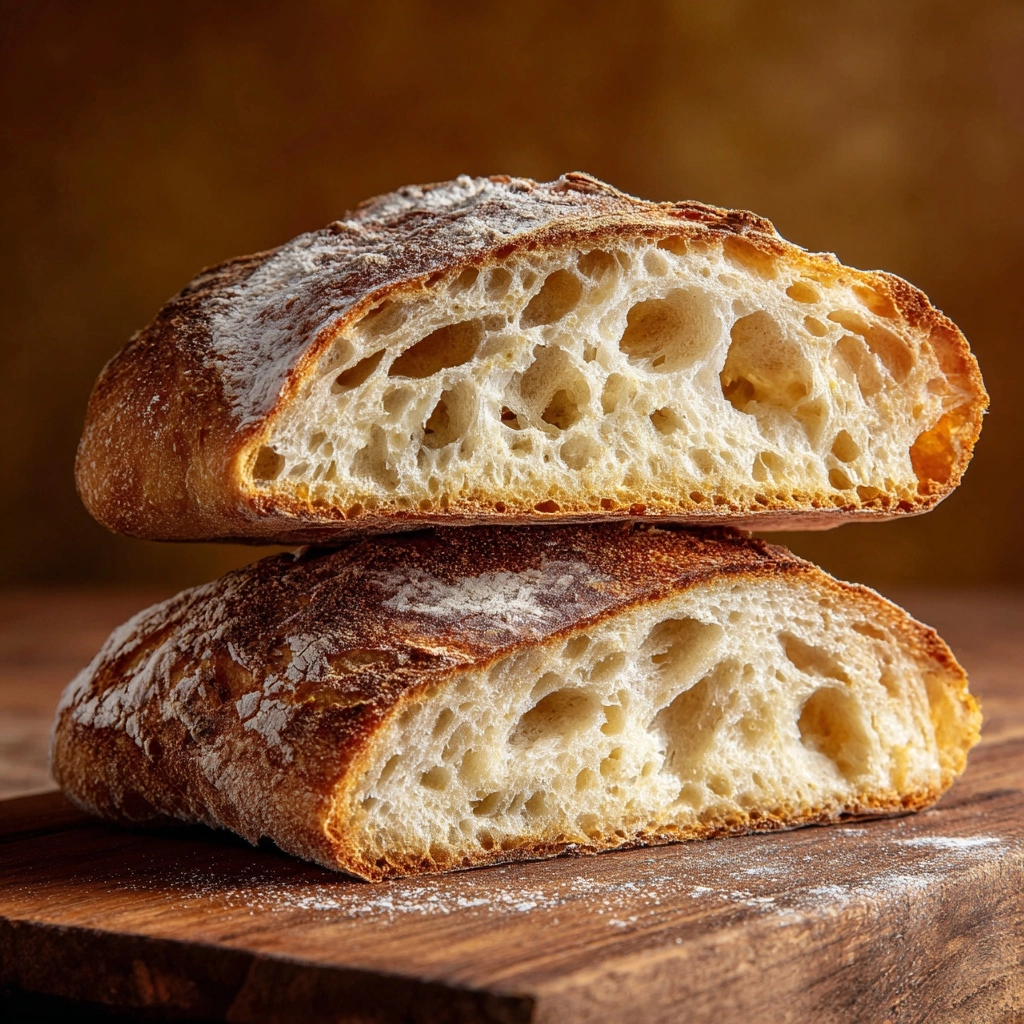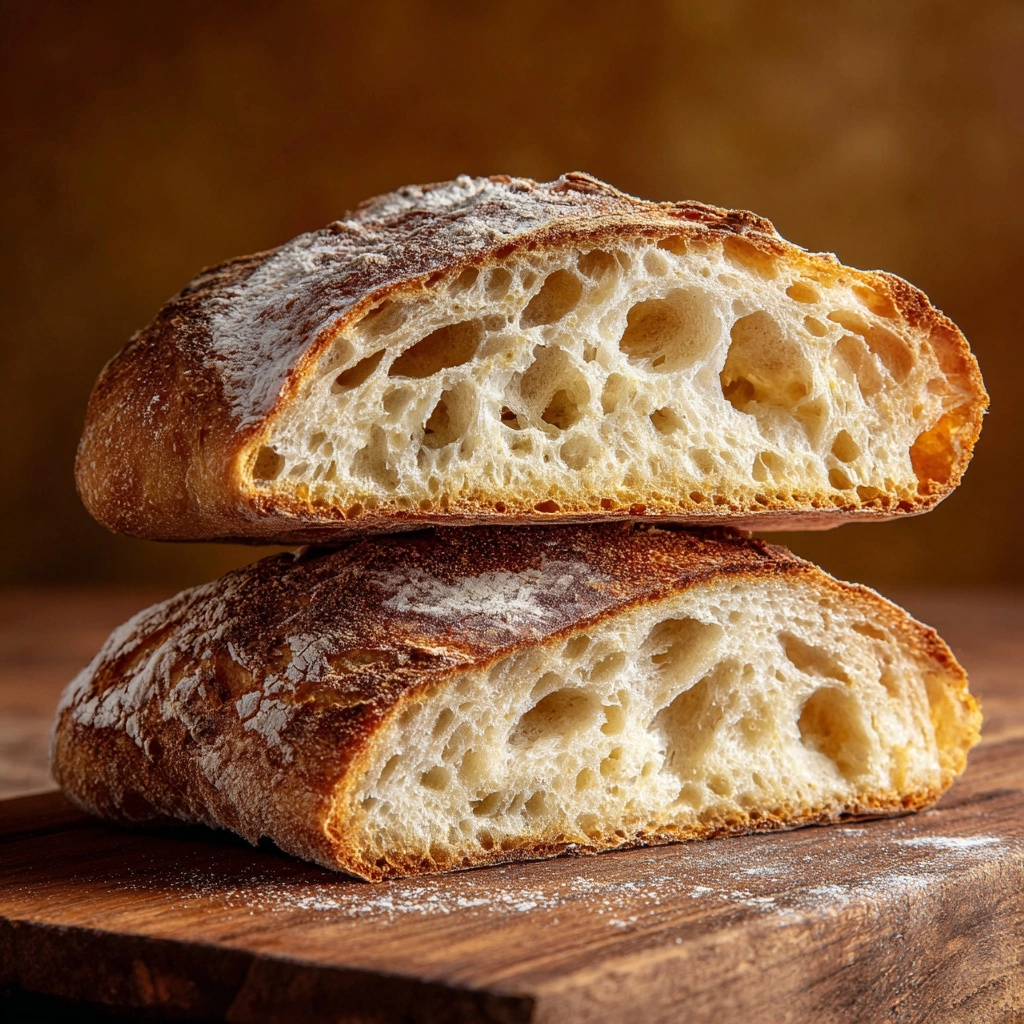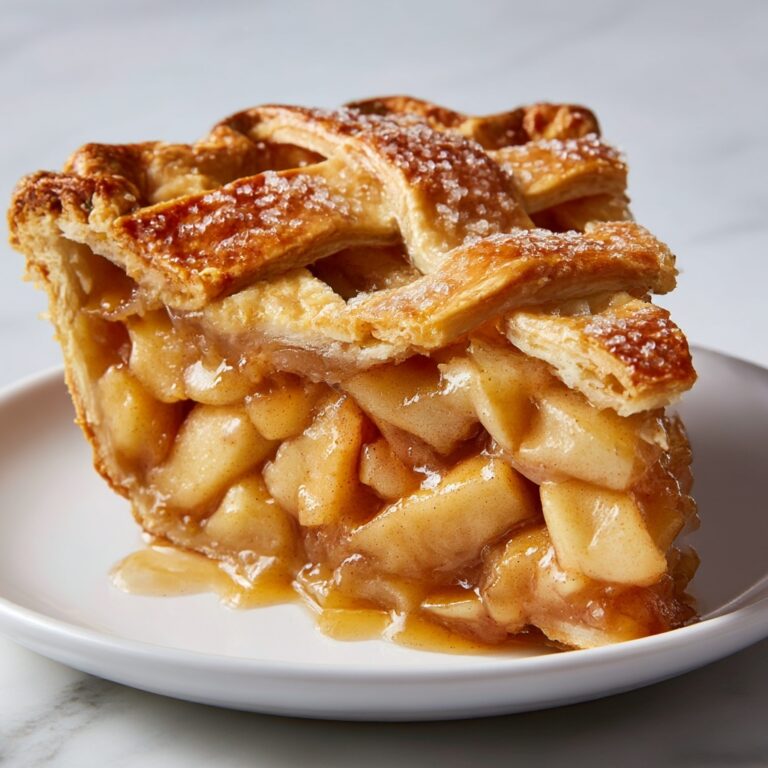If you’ve ever dreamed of that bakery-fresh aroma filling your kitchen, this ciabatta recipe is your golden ticket. With a gorgeously crisp crust, those classic, irregular air pockets, and an irresistibly chewy bite, ciabatta brings rustic Italian charm right to your home oven. Whether you plan on pairing it with a bowl of soup, using it for sandwiches, or just tearing off a warm chunk to dip in olive oil, ciabatta is a bread worth mastering—and sharing with people you love.

Ingredients You’ll Need
The beauty of ciabatta lies in its simplicity—just a handful of pantry staples create unbeatable flavor and texture. Each ingredient plays an important role, so don’t be tempted to swap or skip!
- All-purpose flour: The base of our dough, giving the bread its signature chewy crumb and open structure.
- Salt: Essential for bringing depth and a savory note to every bite; it also controls yeast activity.
- Instant yeast: A tiny amount goes a long way for a slow, overnight fermentation and that bakery-style flavor.
- Water (room temperature): Hydrates the flour, activates the yeast, and helps develop those beautiful pockets of air.
- Olive oil (for coating): Prevents sticking and adds a subtle richness to the crust.
How to Make Ciabatta
Step 1: Mix the Dough
Start by grabbing a large mixing bowl and whisking together your all-purpose flour, salt, and instant yeast. When those are combined, slowly pour in the room temperature water. Use a sturdy wooden spoon—or better yet, your hands—to mix until you have a sticky, shaggy dough. Don’t worry if it looks messy; that’s what gives ciabatta its wonderfully rustic look and open crumb! Cover the bowl tightly with plastic wrap.
Step 2: Let It Rise Overnight
Here comes the magic: the long, slow fermentation. Leave your dough to rest at room temperature for 12 to 18 hours. When you peek under the plastic wrap, you’ll see bubbles dotting the surface and the dough will have doubled in size. This extended rise is what brings incredible flavor and that classic ciabatta texture.
Step 3: Shape and Fold
Dust your countertop generously with flour—really, don’t be stingy, since this dough is meant to be sticky! Gently turn the dough out, trying not to deflate all those wonderful air bubbles. Shape it into a rough rectangle, then fold it into thirds like folding a letter. Turn it once and fold again. Cover with a clean towel and let it rest for 30 minutes. This rest helps the dough relax for easy stretching and a lovely final shape.
Step 4: Final Shape and Second Rise
Line a baking sheet with a bit of olive oil and flour or cornmeal. With floured hands, carefully stretch the dough into a rustic rectangle about 10×5 inches—embrace its imperfect look! Transfer to your prepared baking sheet and let it rise uncovered for another 30 to 45 minutes, while you preheat your oven for the best oven spring.
Step 5: Bake Your Ciabatta
Place a baking stone or invert a baking sheet in your oven and preheat to 450°F (230°C). For the crustiest ciabatta, add a pan of hot water to the bottom rack to create steam. Slide the dough (with its sheet or directly onto the hot surface) into the oven and bake for 20 to 25 minutes. You’re looking for deeply golden color and a hollow sound when you tap the crust. Cool completely on a wire rack—this is the hardest part, but it ensures the crumb finishes setting and the ciabatta slices beautifully.
How to Serve Ciabatta

Garnishes
Serve your ciabatta simply with a drizzle of excellent olive oil and a sprinkle of flaky sea salt for that authentic Italian touch. For a flavor boost, try rubbing a cut garlic clove over the warm crust or topping with fresh herbs like rosemary or thyme. These little additions make every slice feel special.
Side Dishes
Ciabatta is the perfect partner for just about anything on your table. Use it to soak up hearty soups and stews, as a base for an open-faced bruschetta, or alongside a vibrant salad. It’s sturdy enough for loaded sandwiches and absolutely dreamy when dipped in balsamic vinegar and olive oil.
Creative Ways to Present
Think beyond basic slices! Tear your ciabatta into chunks for a rustic bread basket, grill slices for smoky crostini, or turn leftovers into crispy croutons for a Caesar salad. You can even use stale ciabatta in a panzanella, the ultimate Tuscan bread salad. With ciabatta, there are no limits to your creativity.
Make Ahead and Storage
Storing Leftovers
To keep your ciabatta at peak freshness, wrap any leftover bread tightly in foil or a clean kitchen towel and store it at room temperature for up to two days. The crust may soften, but a quick toast brings it right back to life.
Freezing
Ciabatta freezes wonderfully! Slice the loaf and slip pieces into a freezer bag, squeezing out as much air as possible. Stored this way, your bread will last for up to three months. Just take out a slice or two whenever you need it.
Reheating
For the perfect revival, mist or sprinkle frozen or day-old ciabatta with a little water, then pop it in a 350°F (175°C) oven for 5 to 8 minutes. The heat refreshes the crust, making it crispy once more while warming the soft interior.
FAQs
What makes ciabatta different from other Italian breads?
Ciabatta is known for its open crumb, chewy texture, and slightly rustic, irregular shape. High hydration and gentle handling create those signature air pockets, distinguishing it from denser breads like focaccia or baguette.
Can I use bread flour instead of all-purpose flour?
Absolutely! In fact, bread flour will give your ciabatta a slightly chewier bite and perhaps even larger air pockets. Just keep an eye on the hydration; you may need a splash more water since bread flour absorbs more liquid.
Why is my dough so sticky? Did I do something wrong?
Not at all! Ciabatta dough is supposed to be extremely sticky and wet—this is what produces the fluffy, airy crumb. Resist the urge to add more flour; extra stickiness means you’re on the right track.
How do I create more steam in my oven for a crispier crust?
One easy trick: place a shallow pan of hot water on the bottom rack of your oven during baking. The steam will ensure a shatteringly crisp crust, just like your favorite bakery.
What’s the best way to slice ciabatta without squishing it?
Let the loaf cool completely on a wire rack, then use a sharp, serrated bread knife to saw gently through the crust. This preserves all those lovely air pockets and makes slicing easy.
Final Thoughts
There’s something truly magical about making ciabatta from scratch—watching simple ingredients transform into a loaf with crackling crust and a pillowy crumb. Don’t be afraid to get your hands a little messy; the delicious results are so worth it. Give this ciabatta recipe a try next time you’re in the mood for bread baking bliss!







